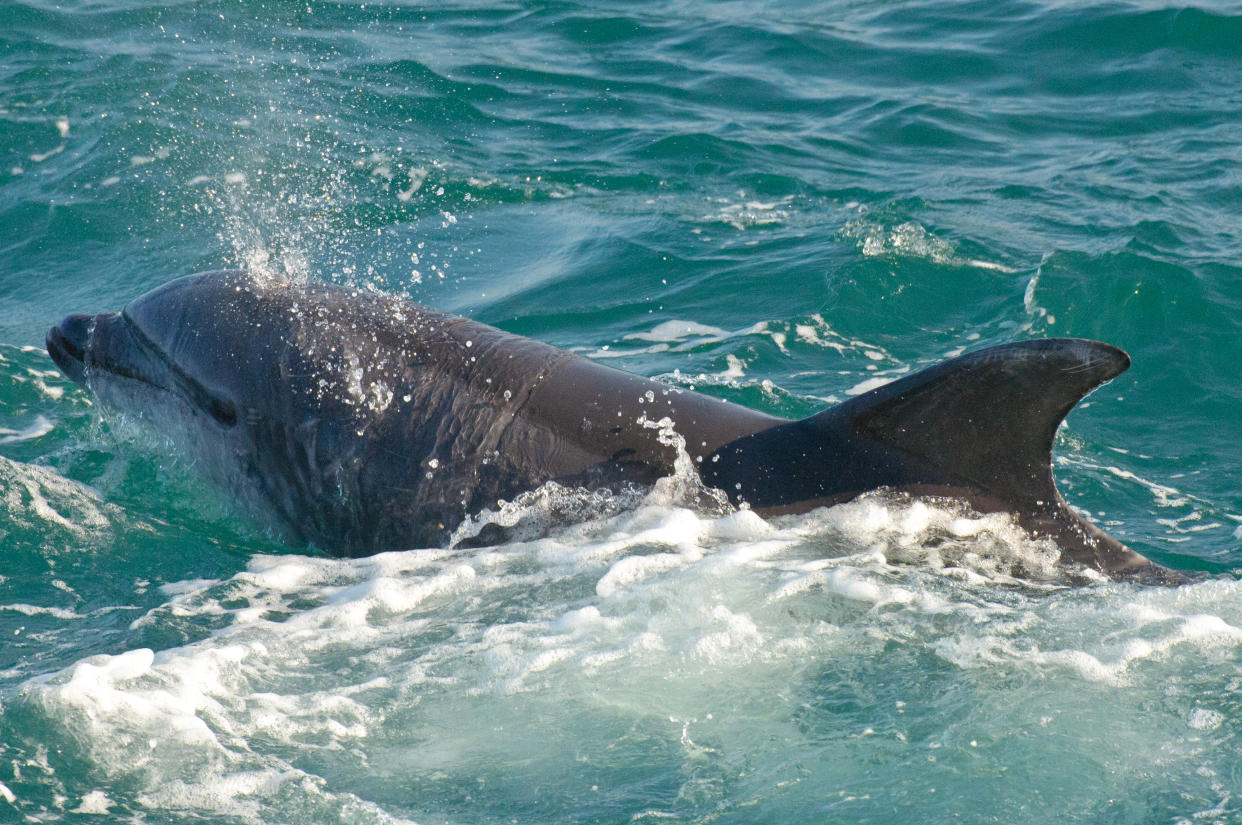England’s only bottlenose dolphin pod at risk of extinction, says study
England’s only resident population of bottlenose dolphins is under serious threat from a combination of human activity, environmental pollution and difficulties in rearing young that survive into adulthood, according to new research.
For almost a decade, scientists and conservation groups based along the English Channel coast have been working together with citizen scientists to monitor the movements and distribution of this population.
This has enabled them to establish the most detailed picture yet of this population, their movements and social interactions, and the challenges they face on a daily basis.

Researchers estimate the pod currently consists of just 48 dolphins, which is less than half the size of most coastal bottlenose dolphin populations, and around 10 times smaller than a pod known to inhabit the Channel coast of France.
Their fight for survival is made even more challenging by the fact they inhabit some of the busiest shipping lanes in the world and also coastal waters known to suffer from repeated and prolonged spells of pollution and fishing pressure.
These findings have led the researchers to call for urgent measures to protect the population and its habitats, or risk the possibility that this group of animals may not survive.
The research is being led by Cornwall Wildlife Trust and scientists at the University of Plymouth to collate and analyse sightings data, through the South Coast Bottlenose Dolphin Consortium.
The study is the result of work by former marine biology research student Shauna Corr, and former marine conservation students Rebecca Dudley and Saskia Duncan, supervised by Dr Simon Ingram.
Dr Ingram, who leads the bottlenose dolphin research project and is senior author on the study, said: “Bottlenose dolphins are highly intelligent and social animals with complex cultures.
“They are known to have some of the closest interactions with humans of any species on the planet, but because they live in the sea, and not on land, they go unseen by most people and we fail to appreciate quite how amazing yet vulnerable they are.
“This population lives along one of the most developed and busy coastlines in the world which poses a clear threat to their conservation.
“To see the south coast population decline to extinction would be a local tragedy for the dolphins and for us.”
This population of bottlenose dolphins was first documented by scientists in the mid-1990s and became the subject of detailed scientific analysis again in 2017 due to concerns raised by Cornwall Wildlife Trust about their plight and vulnerability to human impacts.
Individual bottlenose dolphins can be identified from their unique fin markings enabling scientists to build up a catalogue of known dolphins which, through repeated sightings, helped the students to track the movements of individual animals over several years.
The repeat sightings revealed that dolphins from this pod travel the coast between North Cornwall and East Sussex, with some individuals known to have travelled up to 760km between sightings.
The population appears to be isolated with individuals known to socialise within their own pod close to the shore but not with others from other populations normally found in the open sea.
The study’s authors hope this information will be used by statutory marine conservation organisations to provide better protection for this highly vulnerable population and to take appropriate measures in order for the pod to survive.
– The study, Using citizen science data to assess the vulnerability of bottlenose dolphins to human impacts along England’s south coast, is published in the journal Animal Conservation.
